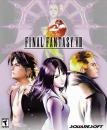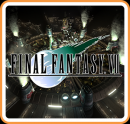Jumpin said:
TheMisterManGuy said:
Regarding the internal teams within Nintendo, I've noticed a pattern with how they release games for Nintendo systems, at least for most of the newer ones. Traditionally, Nintendo makes sure to get it's big titles, IE, ones that can move consoles, out on the system within the first 2-3 years of the platforms life. Nintendo typically starts software development for its next system, about a year or two before it releases. This gives them enough time to prepare launch games, and have some footage ready for future titles to drive up hype for the system. Notice how Nintendo's cash-cows like Mario, Mario Kart, Smash, and Zelda are announced as early as possible for the system.
Within the first 2 or so years of the platform, Nintendo makes sure the big guns are out as soon as possible. Then once the system sellers are out of the way, smaller teams are then assembled to create more experimental software, or in the case of Zelda, work on a sequel. You notice that as we get further into the life of a Nintendo system, you start the in-house first party releases become a bit more niche and smaller in scope. It especially rings true for their handhelds, after the big budget games teams expended their projects, the smaller teams come in and work on games with a quicker turn around. So while the early period of the 3DS for example, you may see the big Mario, Zelda, and Animal Crossing releases, by year 3 you start to see odd-balls like Miitopia and Happy Home Designer become more common.
If that format still holds true, the same will probably happen to the Switch. Now that all of Nintendo's system selling properties are out with game releases, the only path now is spin-offs, experimental niche games, plus maybe a big Zelda Sequel.
|
It’s usually launch with Mario or Zelda, then release the other game a year later. This was the strategy used 4 times: SNES, N64, Wii, and Switch. Zelda happened to be delayed on the N64, so it came out over a year later than planned. Gamecube and Wii U were stopgap systems, consoles released to buy time for fans rather than being a significant investment, and that’s somewhat why they didn’t really follow this strategy and typically had half-baked versions of software instead. Mario Sunshine and Mario 3D World are the two most lacking Mario titles, I am not saying they’re terrible, but they don’t feel mainline - even Miyamoto threw Sunshine under the bus by saying it wasn’t the Mario 64-2 project (that eventually materialized in the form of Super Mario Galaxy). While Celda did some very interesting things in animation, it was clear that something was way off. It didn’t resemble the tech demo that came out, it seemed more like a spinoff. Indeed there were eventually spinoffs related in the vein of Celda. It wasn’t a bad game, arguably it was better than Twilight Princess, but sits far below A Link to the Past, Ocarina of Time, and Breath of the Wild. It didn’t feel like that big follow-up to Ocarina of Time (I think Twilight Princess tried to be that, but it wasn’t really until Breath of the Wild that we got it).
Anyway, I’ll get to the point.
Software release strategies were not the priority for Gamecube and Wii U. These two consoles were like accidental unplanned babies. Not that they don’t get love, but they didn’t have the same upbringing as their four bigger siblings... And the NES was the first child when no one knew what the hell they were doing.
Gamecube I feel was forced to the market prematurely because the N64 did not do as well as planned, what they wanted was something with a revolutionary controller, and that tech simply wasn’t ready yet. The Wii U is something I felt they wanted to do a Switch with, but they lacked the technology required, so they instead made the Gamepad into a controller and did that whole DS style 2 screen system and asymmetrical gameplay to justify its existence... Wii U was a mess.
I am not saying both were horrendous consoles, just that Nintendo was clearly spending its time during those generations focusing on the next, with the game release schedule having less of a planned structure. Wii and Switch both had very formula schedules, even the N64 did - Nintendo’s problem there is the lack of key third party support (particularly from Capcom and Square, who were basically non-existent, Konami also couldn’t release a lot of its key software on N64) due to cartridges.
|















































